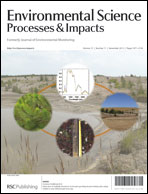Wetland-based passive treatment systems for gold ore processing effluents containing residual cyanide, metals and nitrogen species
Abstract
Gold extraction operations generate a variety of wastes requiring responsible disposal in compliance with current environmental regulations. During recent decades, increased emphasis has been placed on effluent control and treatment, in order to avoid the threat to the environment posed by toxic constituents. In many modern gold mining and ore processing operations, cyanide species are of most immediate concern. Given that natural degradation processes are known to reduce the toxicity of cyanide over time, trials have been made at laboratory and field scales into the feasibility of using wetland-based passive systems as low-cost and environmentally friendly methods for long-term treatment of leachates from closed gold mine tailing disposal facilities. Laboratory experiments on discrete aerobic and anaerobic treatment units supported the development of design parameters for the construction of a field-scale passive system at a gold mine site in northern Spain. An in situ pilot-scale wetland treatment system was designed, constructed and monitored over a nine-month period. Overall, the results suggest that compost-based constructed wetlands are capable of detoxifying cyanidation effluents, removing about 21.6% of dissolved cyanide and 98% of Cu, as well as nitrite and nitrate. Wetland-based passive systems can therefore be considered as a viable technology for removal of residual concentrations of cyanide from leachates emanating from closed gold mine tailing disposal facilities.


 Please wait while we load your content...
Please wait while we load your content...